TVS Apache RTR 200 4V Review: Words: Syed Shiraz | Photography: Asad Ali, Saad Khan
Somewhere in December 2008 or January 2009 it was that I found myself, along with three other motorcyclist friends, in a private conference with TVS Motor Company’s R&D team. They were taking feedback on what all we expect from bikes in three segments: 150-160 cc, 180-200 cc, and 250 cc. But, while we all were laying down our two-wheeled fantasies, one of the chaps from the TVS design team was simultaneously rendering immaculate sketches of the bikes we were visualizing, BEFORE we could even stop describing them! Until then, I had never really believed that aliens lived amongst us…
A few months later, the Apache RTR 180 was launched. It was better than the still-brilliant Pulsar 180 on most counts; in fact, one of the friends from the aforementioned group had bought one immediately. The bike did pretty well for TVS, and still continues to sell in decent numbers, and TVS even followed it up with an ABS variant, which holds the distinction of being the first ABS-equipped motorcycle to be launched by an Indian manufacturer. But the 200 and 250 were nowhere to be seen. We thought the alien had left TVS. And then the Draken concept happened in 2014. Guess he was still there…
Thankfully, when the Apache RTR 200 finally arrived on scene last year, everyone, including us, were overjoyed to see that it carried a lot from the Draken concept, and that the latter wasn’t just a show piece after all, like the many concepts showcased by other manufacturers (like Hero MotoCorp) in the same Auto Expo.
The whole Indian riding community, including us journos/bloggers and you guys, the hardcore enthusiasts, agreed in unison that the latest Apache RTR looked good. I loved it even more because I have always wanted my nakeds to be stark naked. I just don’t want them to wear those bikinis. Okay, I don’t know what that last statement got you imagining, so, for the benefit of new readers or folks new to bikes, let me quickly clarify in layman’s terms, before they label me a pervert, that naked, supernaked, etc., are all motorcycle categories, and bikini-fairings are those little plasticky contraptions (a cowl plus visor) that you see wrapped around some of the naked bikes’ headlamps. The lack of those irritating bits is why I loved the first FZ-16, the first Pulsars, the Gixxer, and now the RTR 200.
Because, come on, what really does a bikini-fairing or that stupid piece of cheap plastic (read: ‘standalone wind deflector’) do other than spoiling the looks of the bike? Direct the wind off the navel to the Adam’s apple? No, thank you; our navels need more air anyway.
The RTR doesn’t really require any such crutches for wind management. It’s already so sharp that it seems it would cut through the air like Achilles’ spear! Just look at that front fender to begin with – it’s designed like that to not just pierce the air, but also to stream the air towards the oil cooler. Heck, with that canal like design, you can use it to channel water to irrigate the fields.
Move up a little and your eyes meet the bike’s, which look like a big member’s of the feline family. They look at you like they are sizing you up before the kill. Continue looking at it head on and you’ll notice that the tank extensions add just the right amount of muscle to the stance, without making it appear overbearing. Look deeper and you’ll also notice the air vents or the Ram Air intake, which is not there for extra power but to precisely send more air to the engine head / spark plug via a duct cleverly routed to end just above the spark plug. TVS claim that it, together with oil-cooling, keeps the engine heat lower by ten degrees.
A beautiful case of form following function, then. The same thought process is evident in the rest of the design as well. RTR stands for Racing Throttle Response, and any bike that has such terms in its nomenclature should appear to have a BMI lower than Gwen Stefani’s. And the RTR 200 has really killed it here! The slashes and cuts on the whole bike make you believe that it has been carved with a knife, and, as a result, there is not a hint of flab anywhere on the motorcycle.
I would also like to add here that there is always a sense of lightness with this motorcycle. You notice it on occasions when you have to take it out of a crowded parking lot by pulling/pushing it with your arms and legs. And it’s also there while riding it, but more on that a little later. Let’s get back to discussing the design now. I find the recess in the middle of the rider’s perch to be almost suggestive, and I don’t know if it’s meant to create a vacuum suction in conjunction with the fine line of your behind, to hold you in position, but I can tell you that it is a comfortable seat to straddle and that it does not let you slide around unintentionally.
The pillion sits in reasonable comfort too, while the brilliant grab rail design tells us that the aforementioned alien is indeed a fan of the Caped Crusader. The shape of the all-LED taillamp complements it well too.
But I am not a fan of that exhaust though. On one hand, its double-barrel tip reminded me of my father’s beautiful Geco 12 gauge (or 12 bore in our part of the world) shotgun, while on the other its bottom portion (which houses some green stuff, among other things) just looks like a lot of crudely applied M-Seal. However, since that lump is majorly responsible for the RTR’s throaty exhaust note, I am willing to look past it.
Coming to comfort and ergonomics, the Apache RTR 200 is perhaps THE BEST in segment and anyone from 5’4” to a six-footer would find the riding position feel natural and comfortable. The seat height of 800 mm; the high-set clip-ons, and the slightly rear-set footpegs ensure a position where your wrists, tailbone, and feet are never stressed with your body weight as it remains equally distributed between these three points. Lower back problems and arthritis won’t be taken as excuses from now on. Even if the roads in your city are pathetic. Because the suspension is mind-bogglingly good!
This is the first time that an RTR has got a monoshock, and I wasn’t really expecting TVS to get the damping this right! This is one area where this motorcycle is again miles ahead of its competition. The RTR 200 just glides over bad roads, and that too with zero squeaks or rattles. And if you’re thinking that such astounding ride quality has come with a compromise on handling, then I am happy to report that you are wrong. The RTR 200 is a terrific handler! It feels light on its feet and does not flinch at all in quick directional changes, while displaying impeccable chassis behaviour in fast cornering.
Straight line stability is also great and the bike feels planted at all speeds, even when you are gunning to check its top velocity. The superb grip offered by the Pirellis is also at play here. That grip also allows both the discs to stop the bike quickly, and in a surefooted manner. It seldom happens that both the stoppers of a motorcycle offer good feel and bite, but TVS have aced here as well. Both brakes provide great feedback and bite, and you won’t be locking the tyres under hard braking unless you are a noob. Please note that I am talking about the Pirellis here again, as our test unit came with them, although I hear that the cheaper Remoras are not bad either.
What’s also not bad is the performance and fuel efficiency of the latest RTR’s engine. See, unlike in 2009, when TVS wanted their RTR 180 to be both quicker and faster than the Pulsar 180, the priorities are different now. TVS understand that unlike earlier they have more than the arch rival to contend with. In fact, now they have around half a dozen or more bikes, each hotter than the other, in and around the RTR 200’s price range that are continually trying to sway the customer’s decision in their favour.
Apparently, TVS have studied the demographic well and they understand that though the buyer in this segment definitely wants a quick and fast machine, he won’t be taking it to the Bonneville Salt Flats anytime soon. The company knows that good acceleration in the city; unstressed 100 km/h-plus cruising ability on the highways; good ride quality, and decent fuel efficiency are four things that should keep most in this segment happy. And the RTR 200 doesn’t disappoint.
The Apache will sprint ahead of most traffic when the signal turns green, while being a cinch to negotiate the rush hour, thanks to the perfect fueling and smooth clutch engagement (the clutch pull is light too). The aforementioned ‘lightness’ works wonders here as well. And when in a hurry, you will be able to keep the motorcycle continuously and comfortably in the fastest lane of the road. Now while I strongly condemn racing on public roads, we all know how some pricks react when they see a bike being ridden fast by someone in full riding gear. Check the video below to find out what happens when an overzealous bloke on a CBR 150 R sees a fast moving Apache RTR 200.
Looks like we can’t even test bikes for you in peace! Anyway, the Apache’s 197.75 cc engine breathes through four valves that are operated by a single overhead camshaft. It is a smooth motor and TVS have done a great job at minimising the vibrations that the smaller Apaches have been infamous for. It won’t be wrong to say that the vibrations are almost non-existent for an Apache. Tourers won’t be complaining now.
The boyracers won’t either, as that smooth and refined motor is quite potent too. It produces 20.5 horsepower at 8,500 rpm and 18.1 Nm of torque at 7,000 rpm. There are only five cogs to play with though, but TVS claim that the ratios are good enough for a 3.95s sprint to 60 km/h, and for a 12s run to the ton. The top speed claimed by the company is 127 km/h. Honestly, I was disappointed at first to learn that it does not have a sixth gear, but TVS have a done a good job with the gear ratios and you won’t miss the sixth cog unless you have an OCD with top speed runs. Even then, let me inform you that the almost-perfect Indian Scout Sixty also comes with a five-speed gearbox. So relax, it’s not the end of the world. If you’re still sulking, then check the two video clips below to see what the Apache RTR 200 achieves in the real world.
Apache RTR 200 4V Review – Related Videos
You would have noticed that the in-built 0-60 km/h timer of the RTR showed 3.6s whereas the 0-100 km/h dash took 10 seconds. The top speed achieved was 139 km/h. It’s common knowledge now that all speedos have errors, and the RTR’s would be no exception, so we know that the true top speed and acceleration times would be more in line with what the company has claimed rather than what the bike’s display shows. That said, the fact remains that, for most users, it’s what’s displayed on the bike’s console that counts, and it would be a big high for them to learn that their bike does better than what the company claims. In fact, a reader shared a video of an RTR 200 that dismissed the 0-60 km/h mark in 3.3 seconds, as per the in-built timer, of course.
Speaking of which, the RTR 200’s instrument cluster is the most comprehensive unit of them all. In addition to the usual speedo, rpm, fuel gauge, clock, gear indicator, etc., readouts, it also has a 0-60 km/h timer, lap timer, high speed recorder (where it displays the last highest speed clocked), voice recorder, heart rate monitor, weather forecast sensor, and Tinder. Okay, I made up the last four but even now it has more features than an iPhone. Any more goodies, and it would be an Android. Apples users, please don’t start abusing me; it was a joke!
The information on display is always legible, even under harsh sunlight. I would also like to mention that leaving late from the office daily (boss, you’re reading this, right?) gives me ample opportunity to test the bikes’ headlamps, and I quite liked the Apache’s throw and spread. It helps, especially when most road users around you are not so bright (pun intended, of course!). The RTR’s luminosity shall keep you safer during the day now as well, thanks to the new norms.
The RTR has a 12-liter fuel tank and its consumption stood at 36.4 km/l in this test. I reckon the owners would be able to extract a minimum of 38-40 km/l so even with that pessimistic figure you should be getting a touring range of around 400 km before the low fuel light comes on.
That fuel light reminds me to let you know that even though the ABS icon in the instrument cluster lights up (along with all other tell-tale lights) when you switch the ignition on, this was the non-ABS variant that we tested. As of now their website does not have the FI and ABS variants in the price (ex-showroom, Delhi) section, that only mentions INR 92,215 for the base carburetted version with Remora tyres (the NS200 goes for INR 96,453), and INR 97, 215 for the one with the Pirellis. We contacted TVS to find out the reason for this appalling delay (the bike was launched more than a year ago!) and if you have been patient enough to wait for the RTR 200 FI all this while, you might want to check out their official answer by clicking here.
So what’s the verdict on this, the carburetted RTR 200, you ask? Well, TVS did take time to bring out there latest warrior, but the wait has been worth it. The RTRs have always been the best handling machines in their respective segments, and TVS have not diluted that DNA in the latest RTR as well. In fact, with this one, they have done the unthinkable – making the best handling bike in the segment the one with the best ride quality as well! The motor has all the grunt that you would ever need on even the fastest Indian roads while its tractability, together with the excellent ergos, makes it one of the easiest bikes to ride in messy urban situations. The refinement levels have gone up; the build quality is second to none, and it won’t empty your wallet at the gas station.
Talking about wallets, though you would have already noticed, the pricing of the RTR 200 will give even the Jap 150-160 cc premium brigade a lot to think about. But is it the best 200 cc motorcycle in its segment? The answer is an emphatic YES!
Meanwhile, that alien seems to have applied for Indian citizenship, and this is what he has been working on lately. Good times ahead for all the bike enthusiasts in India, then.
Apache RTR 200 4V Review – Pictorial View
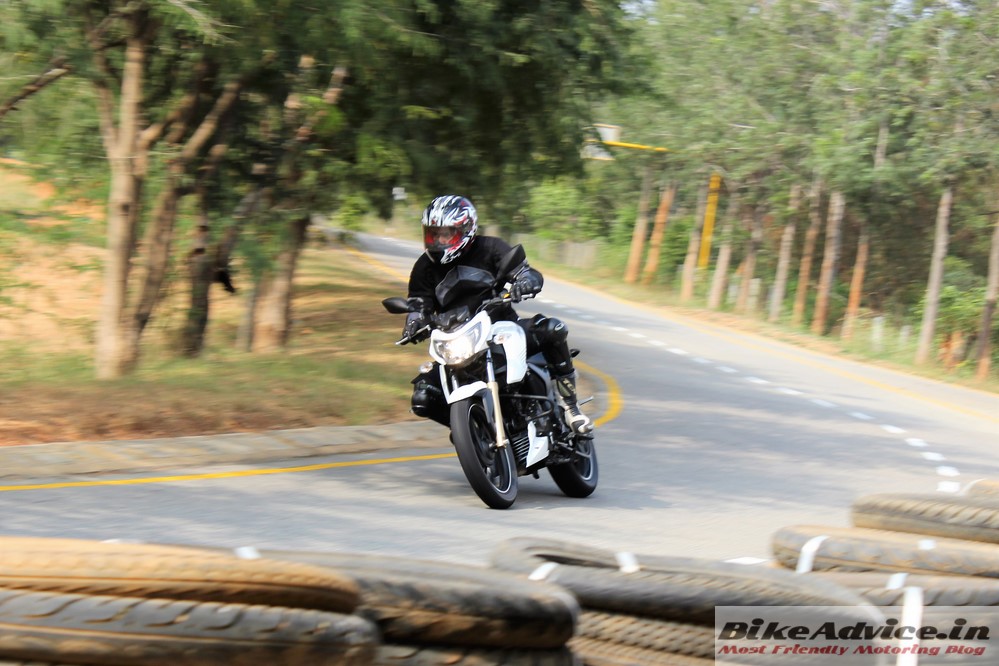
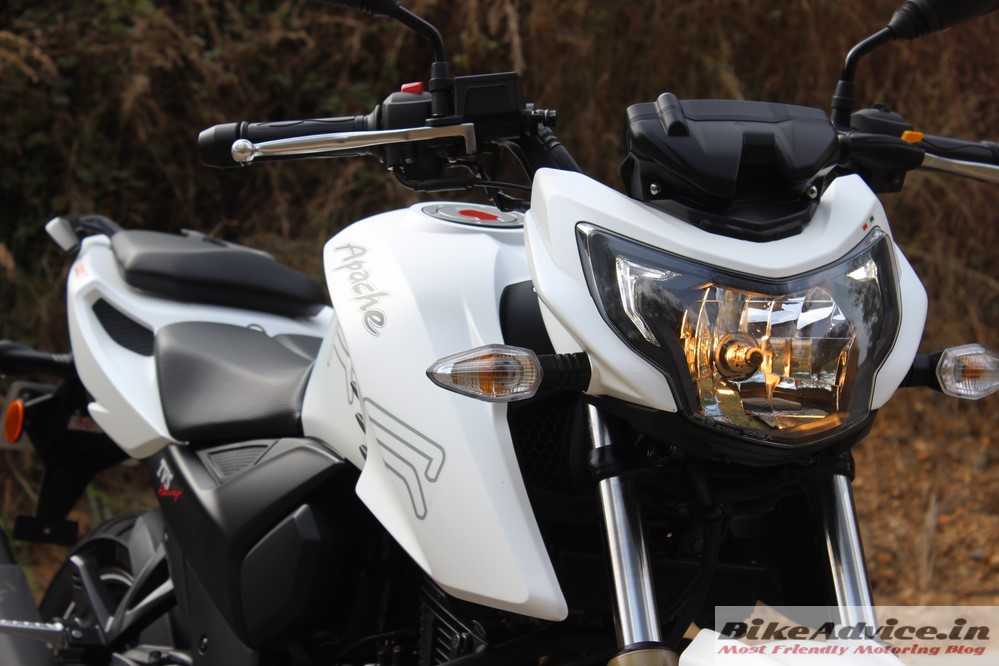
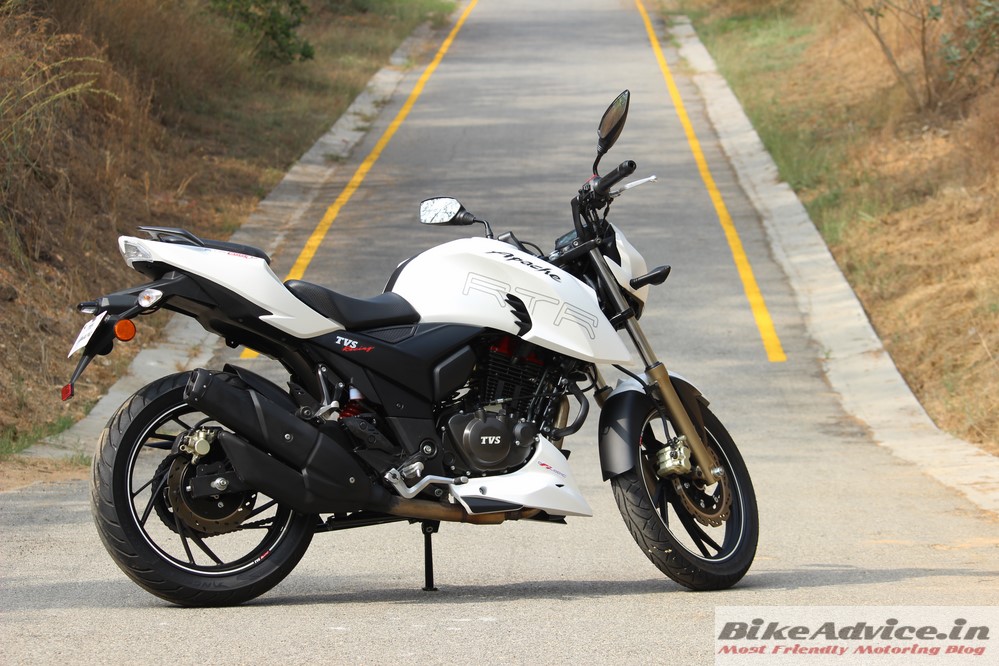
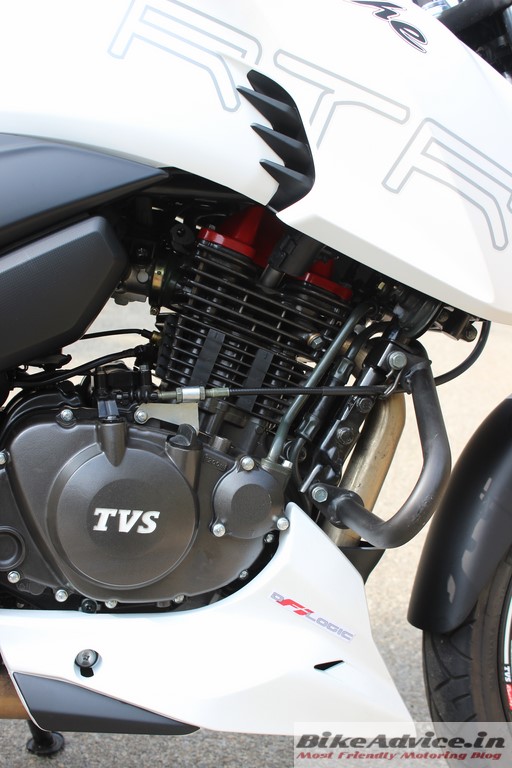

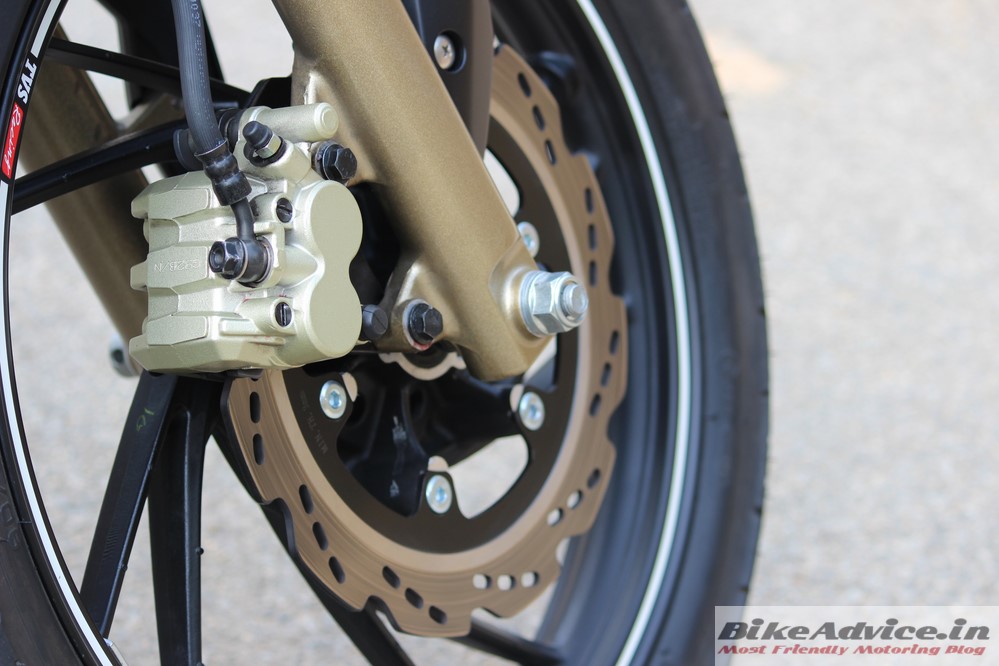

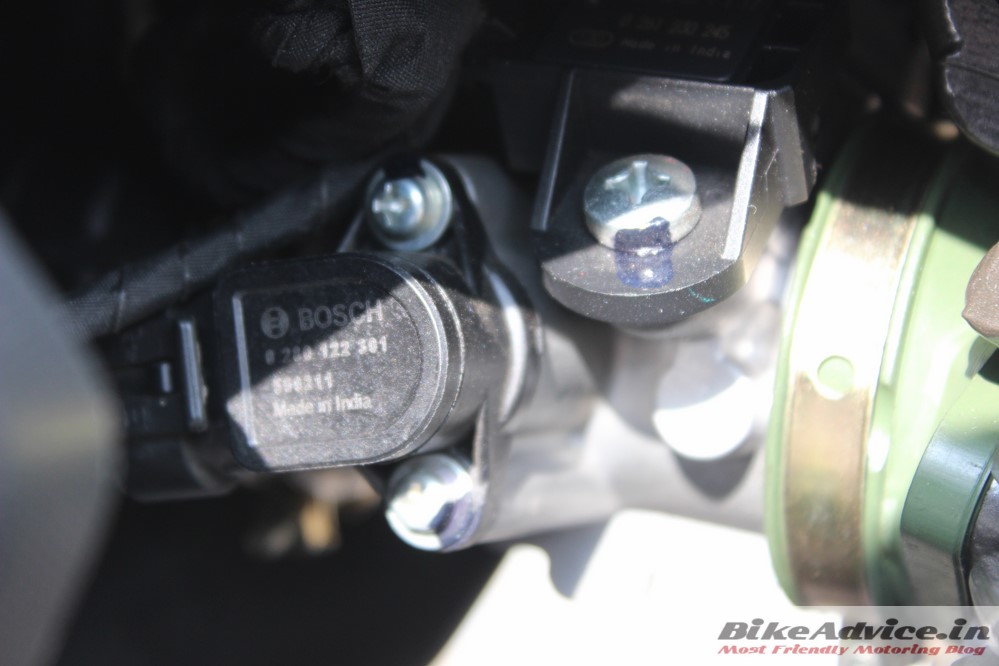


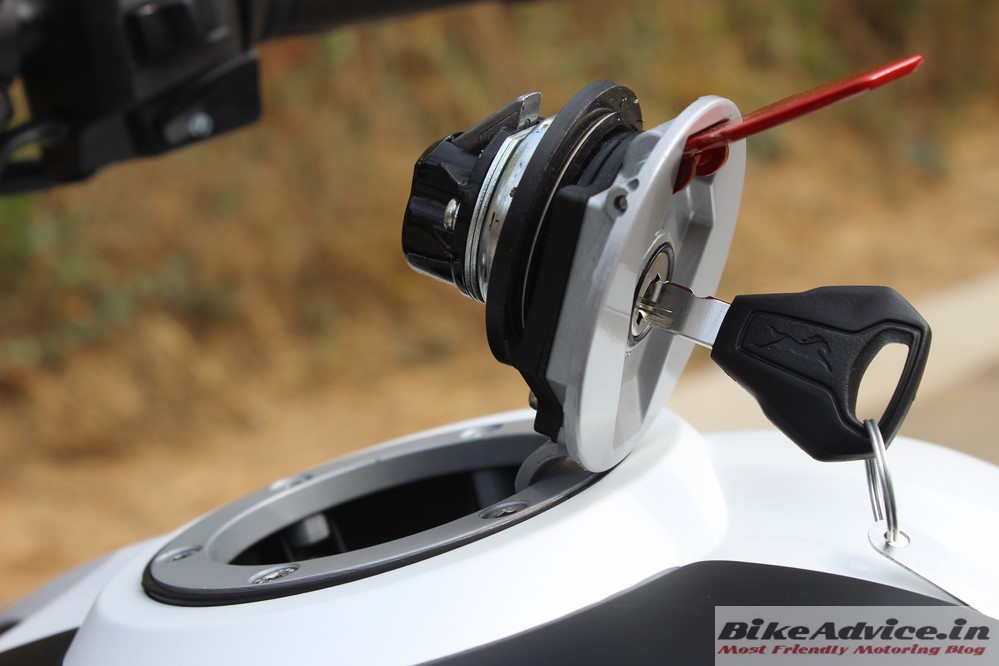
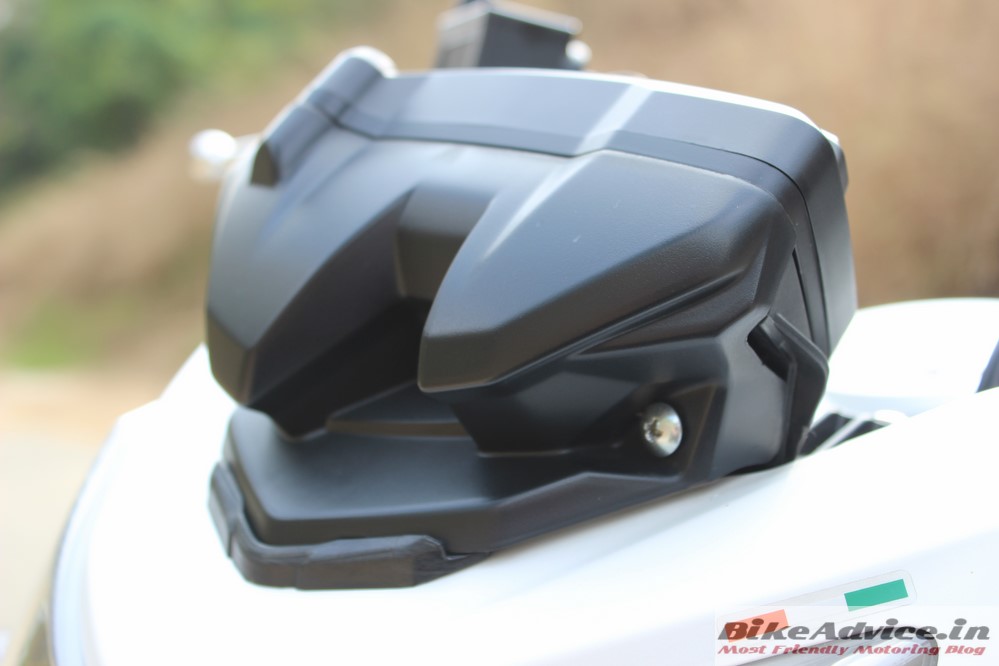

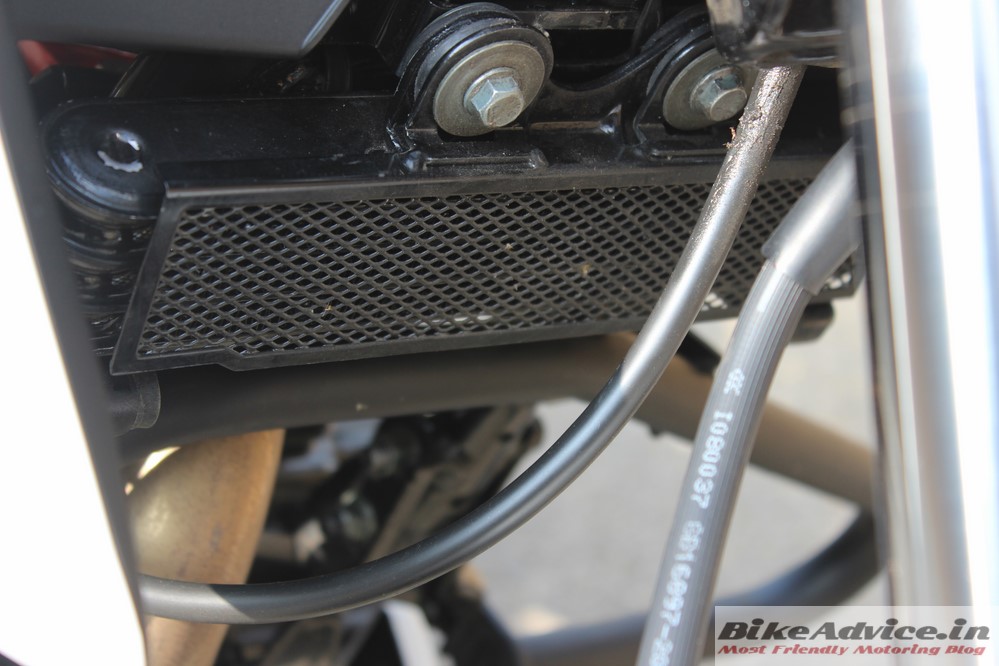


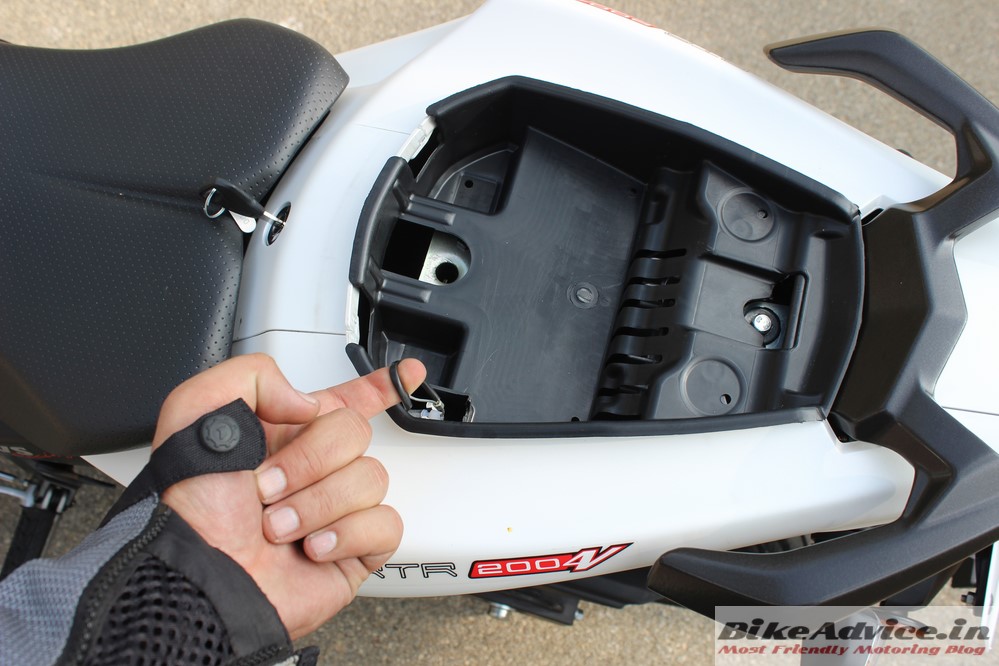
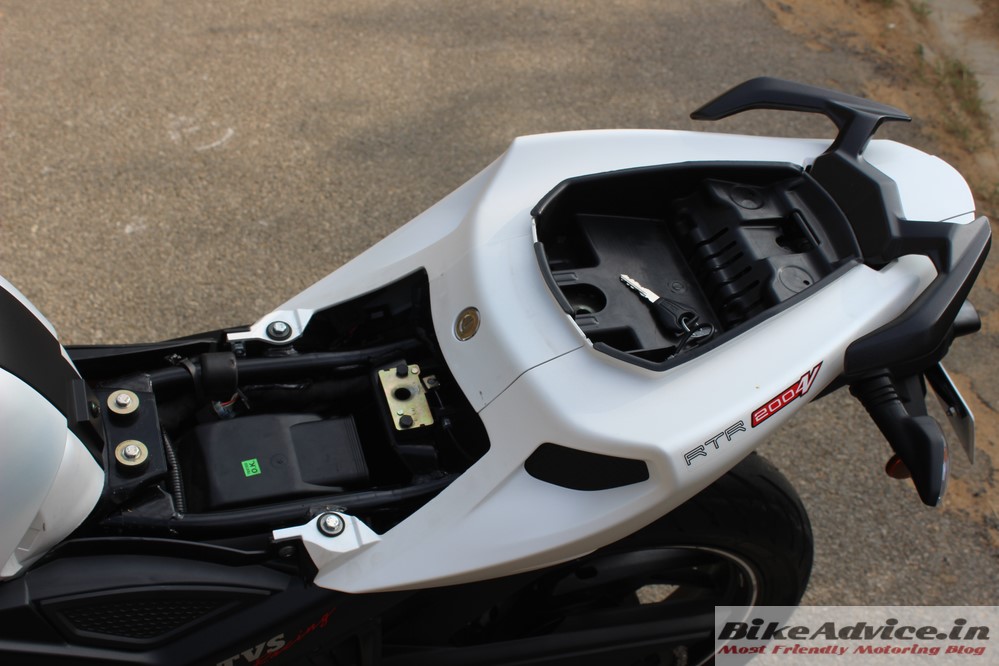
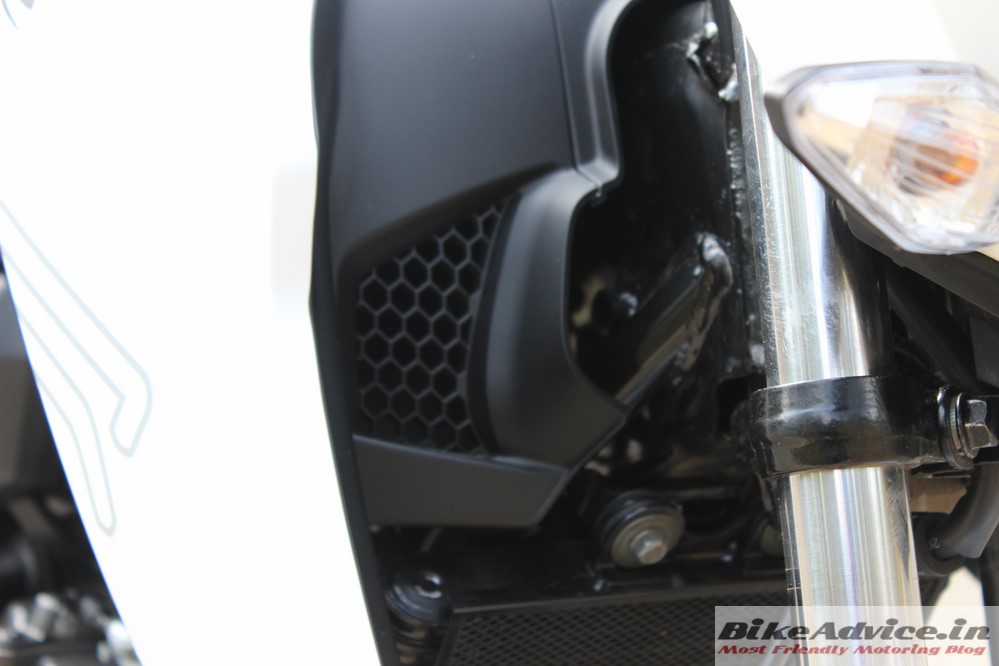
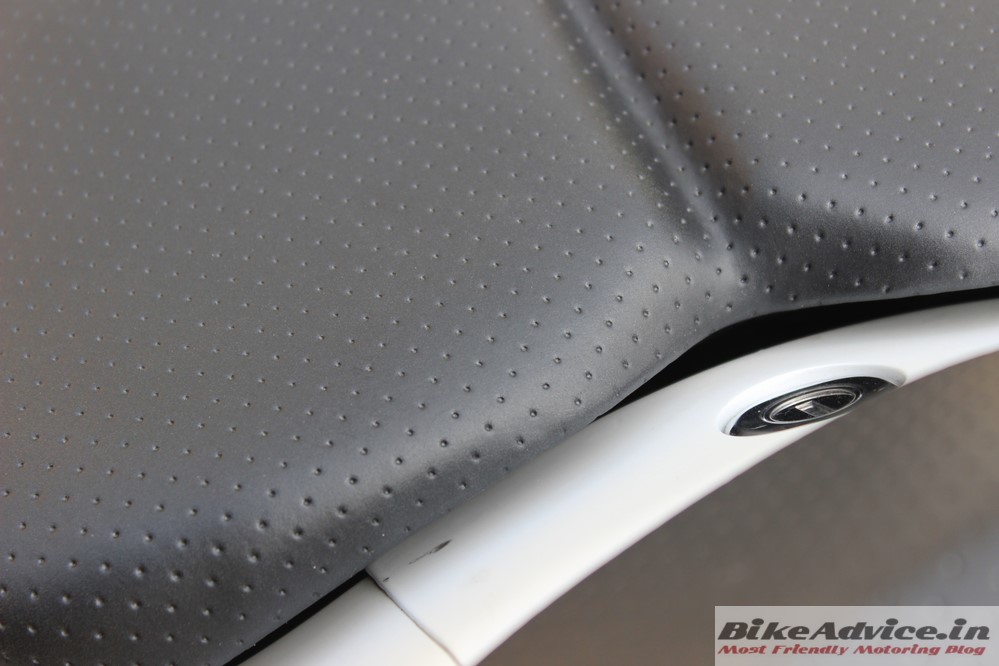


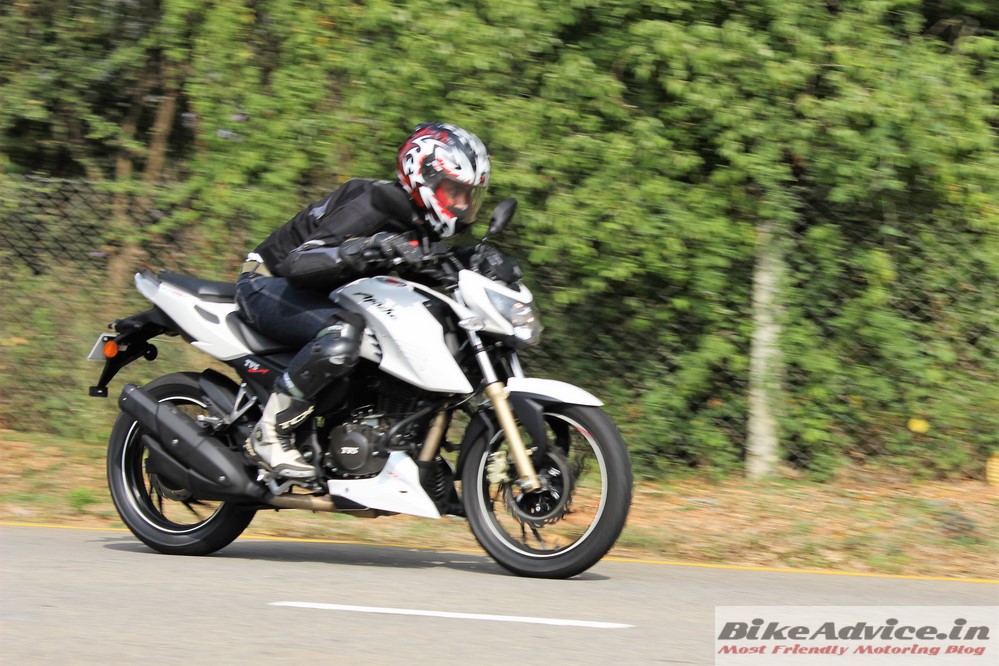



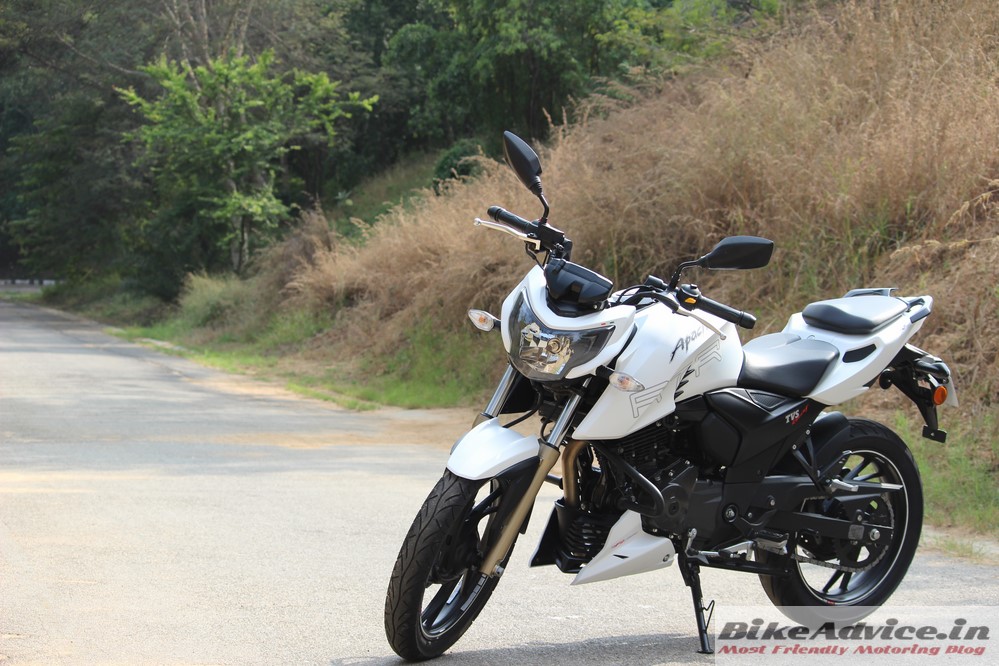
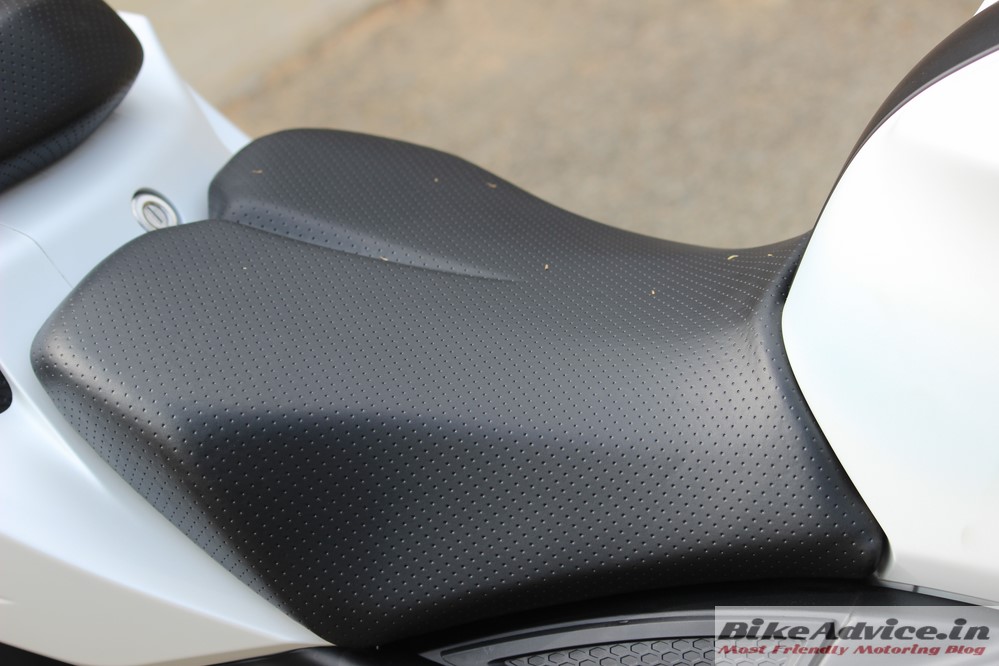
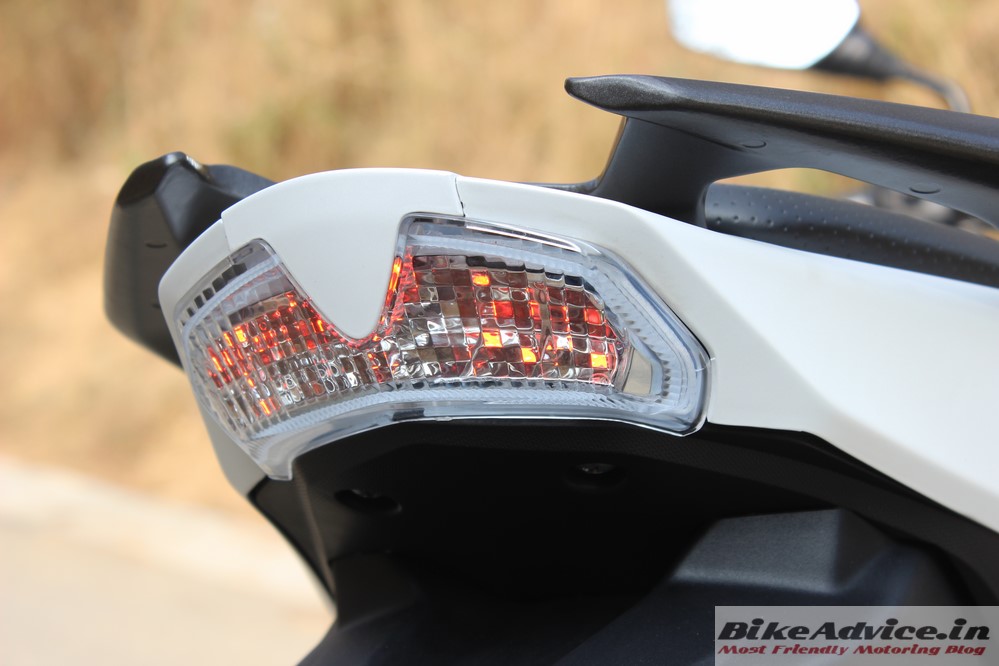

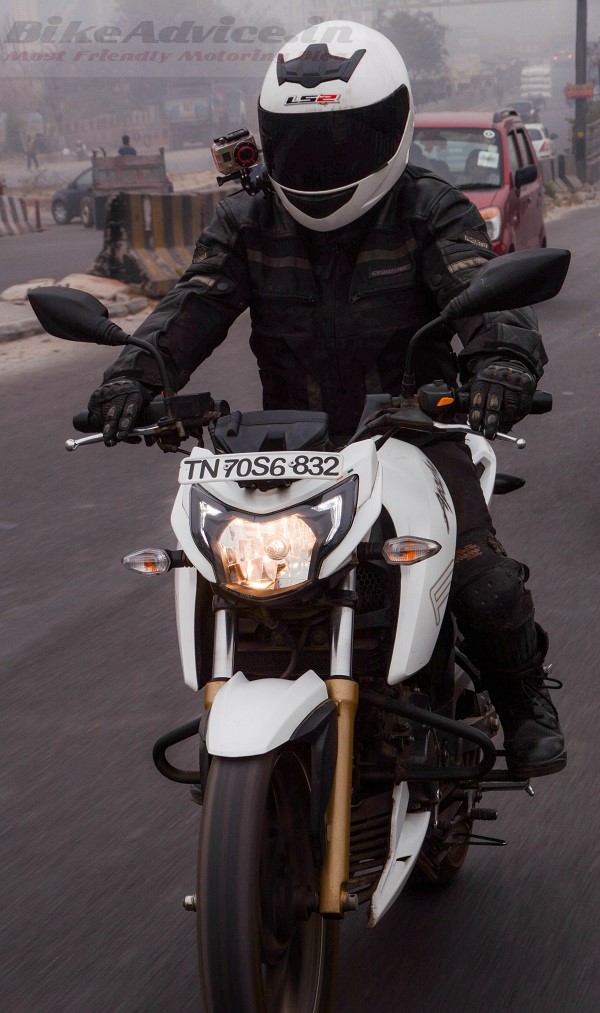
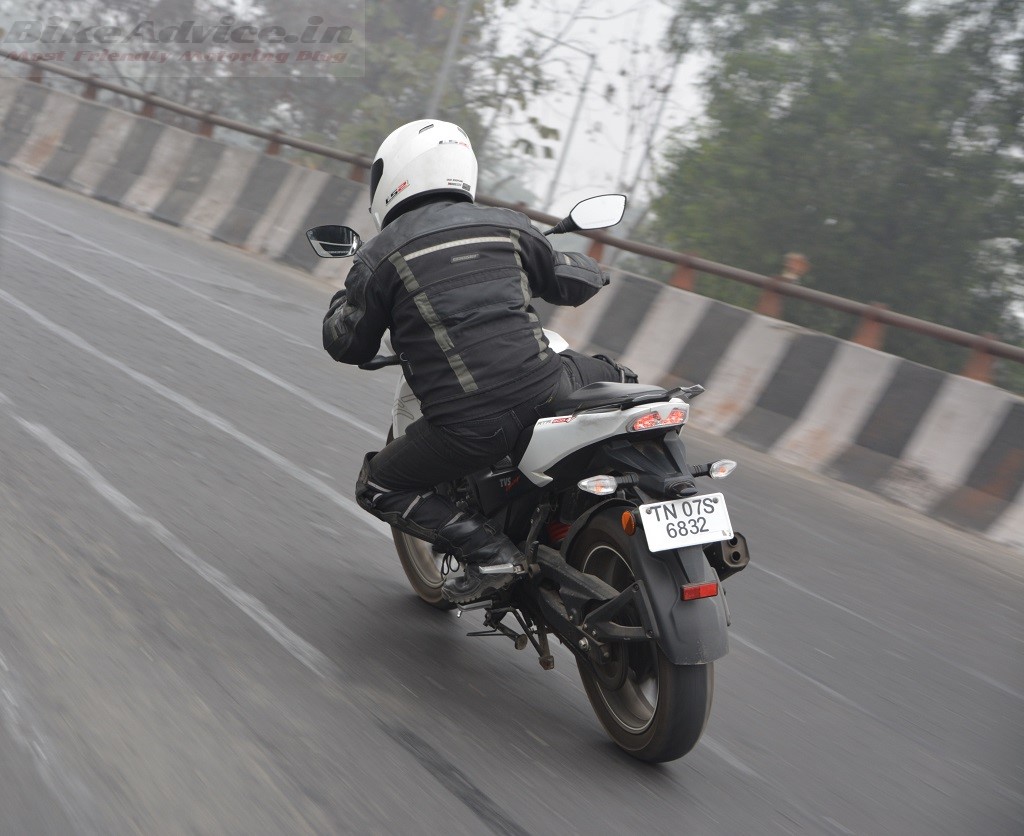
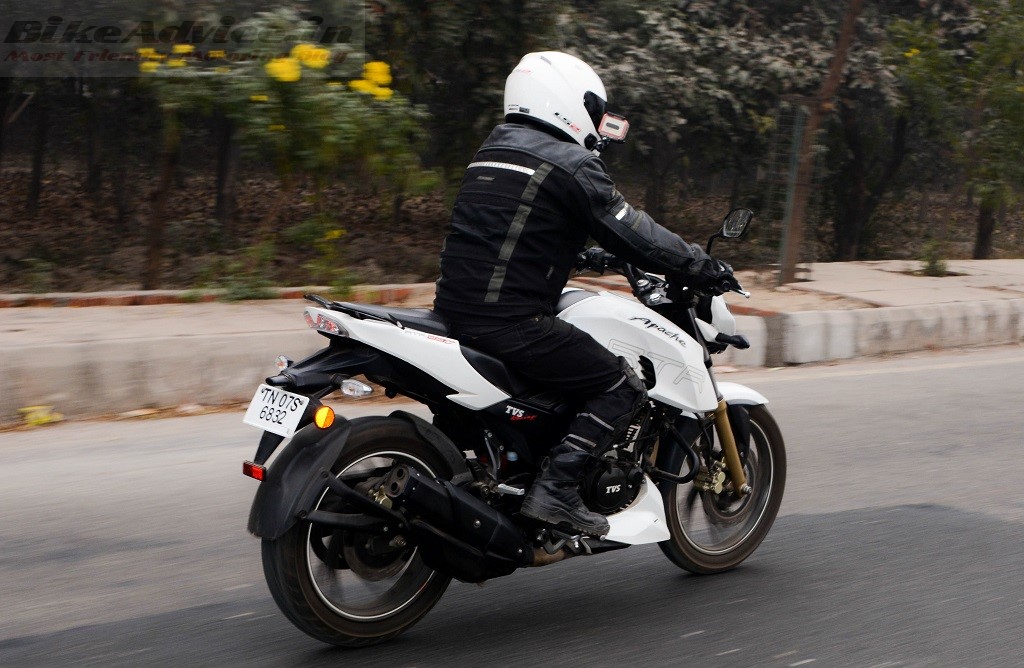
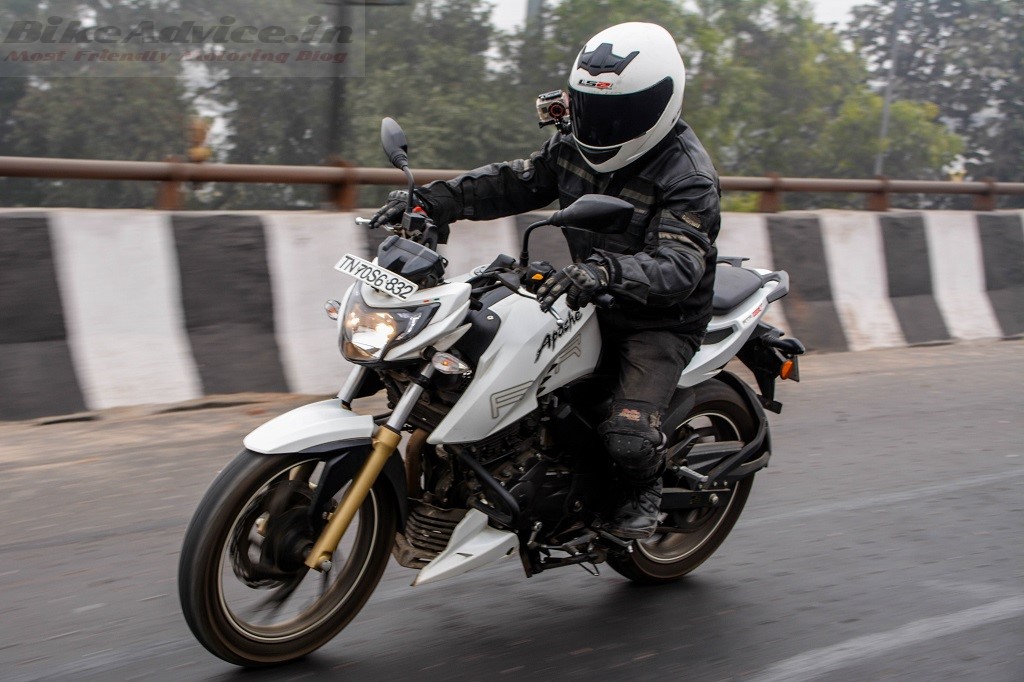
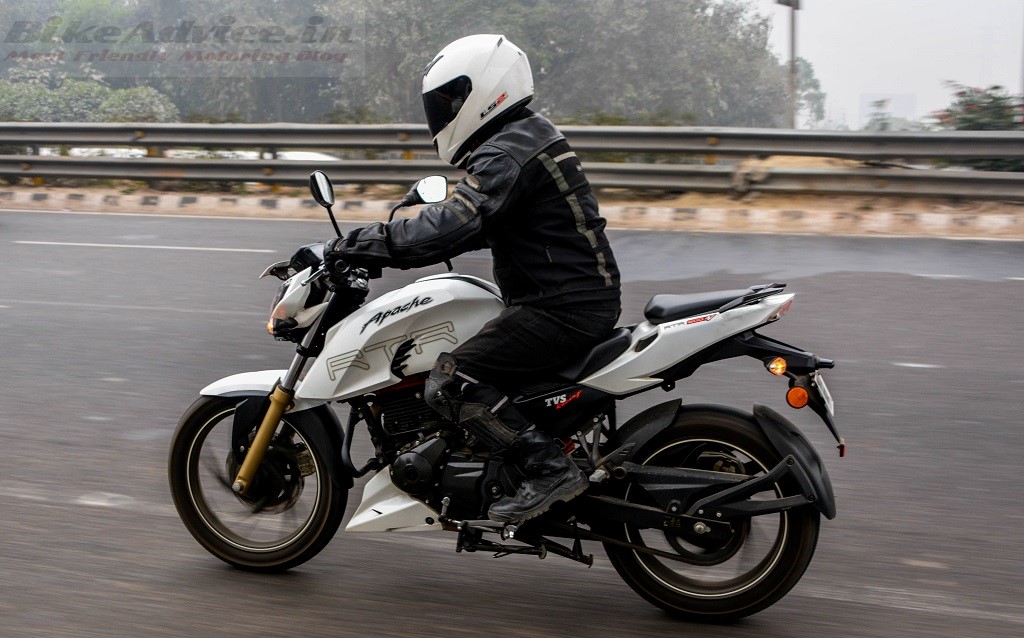

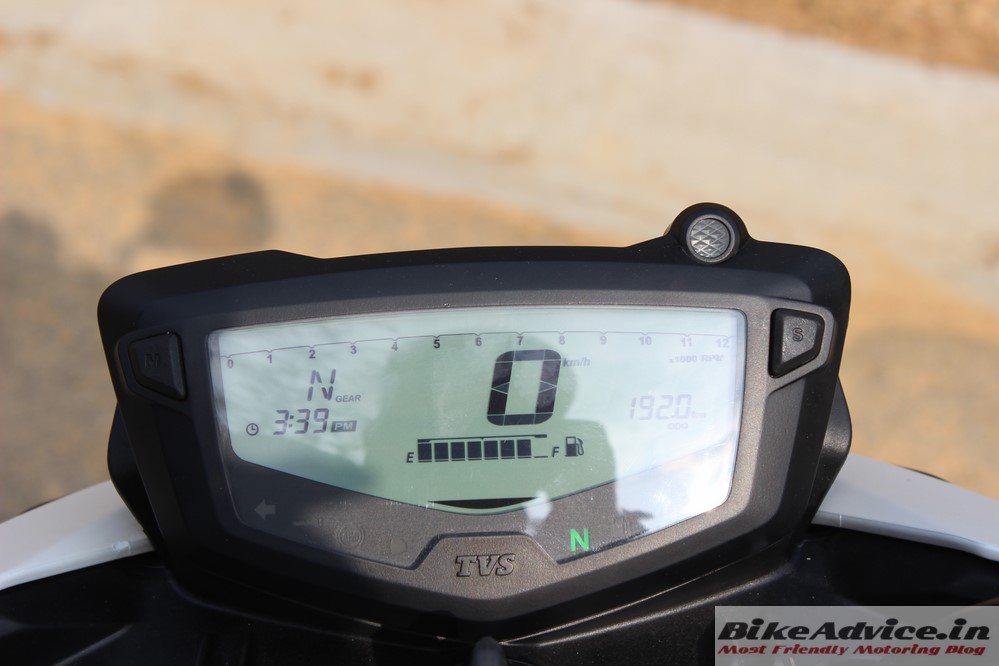


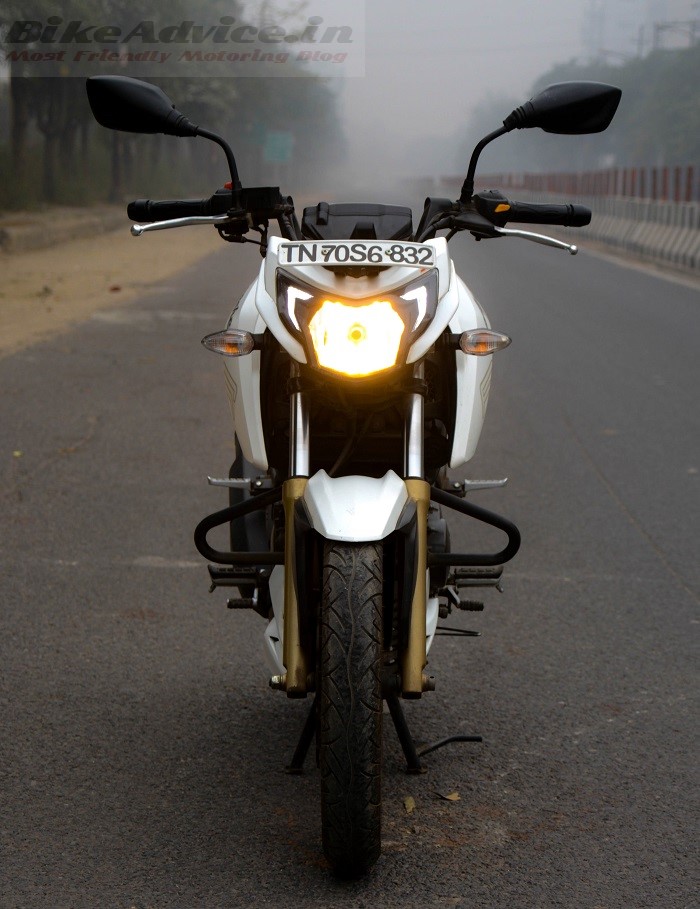
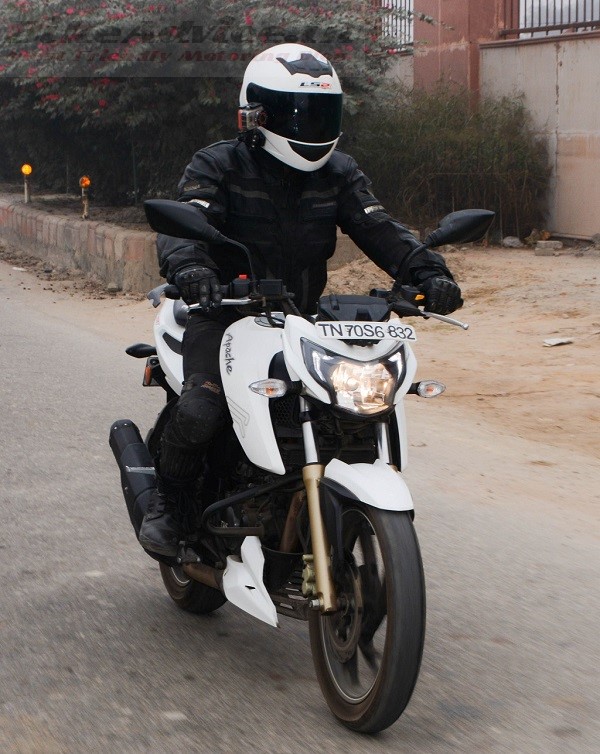
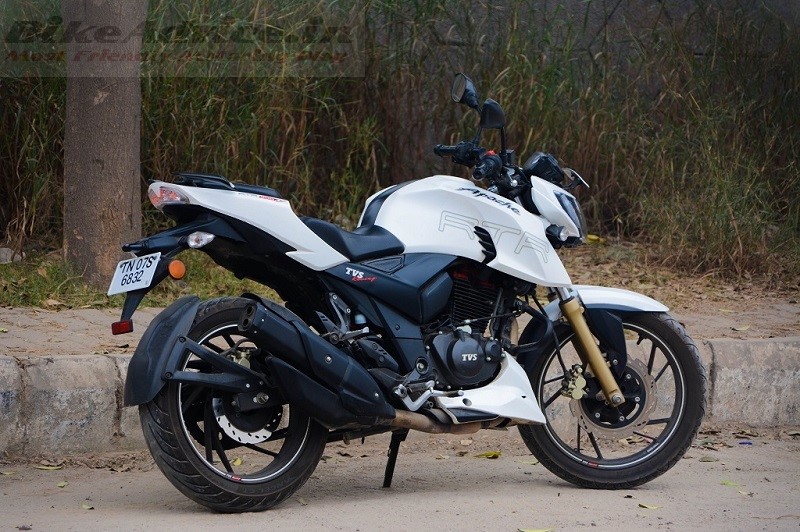
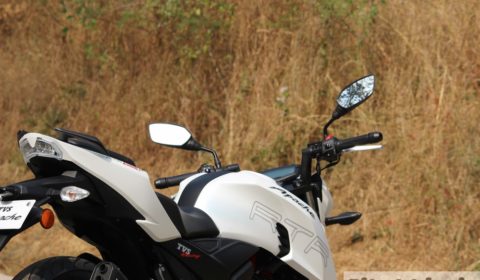

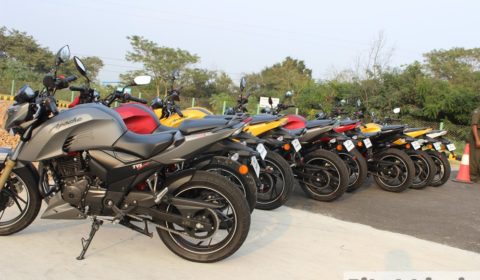
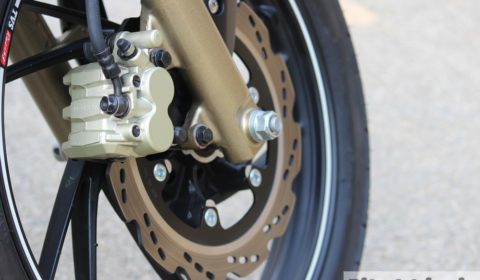
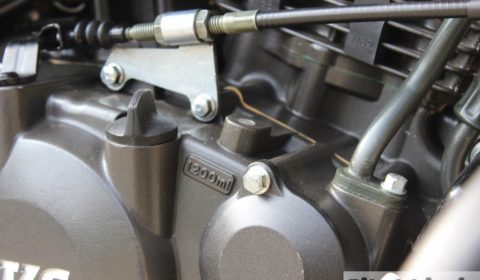
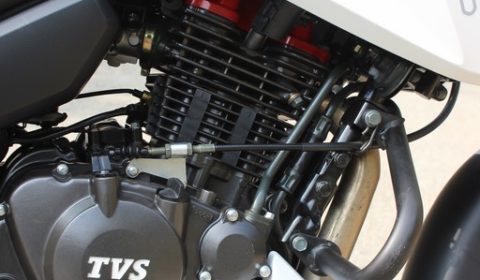







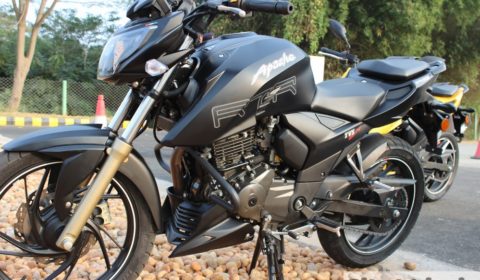
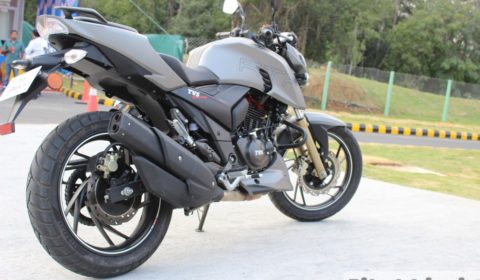
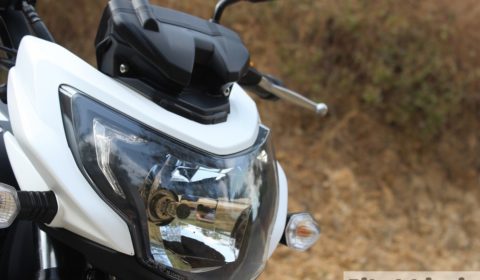

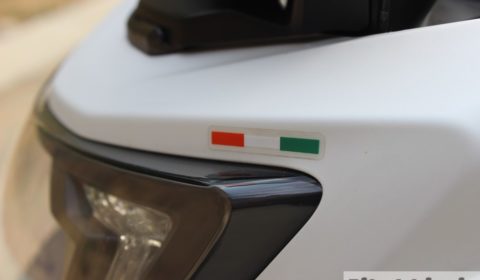

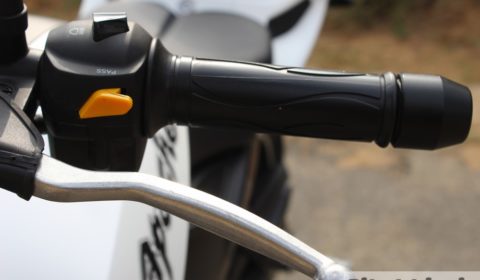

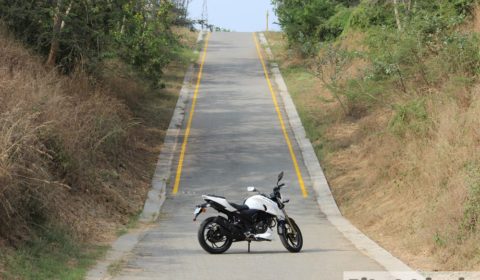
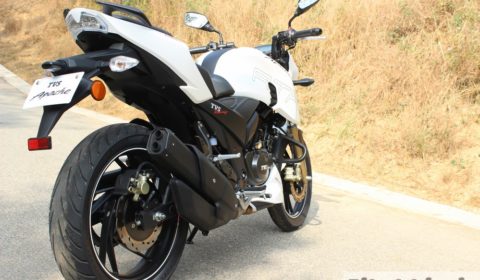




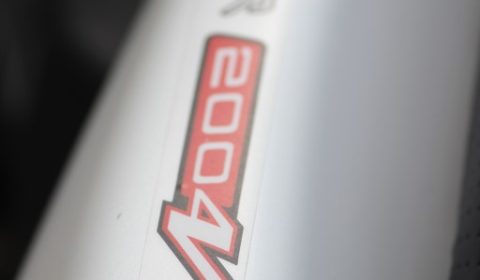
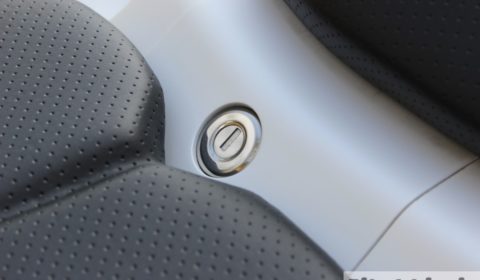

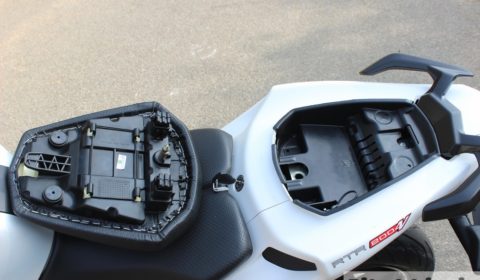
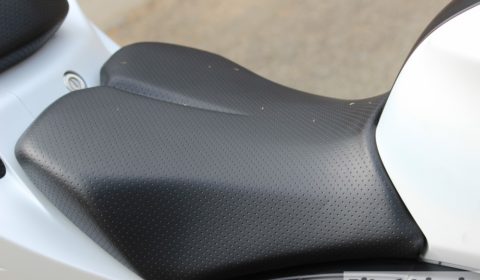
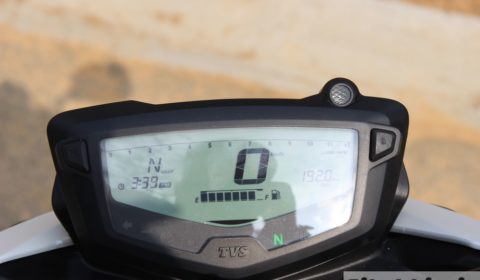
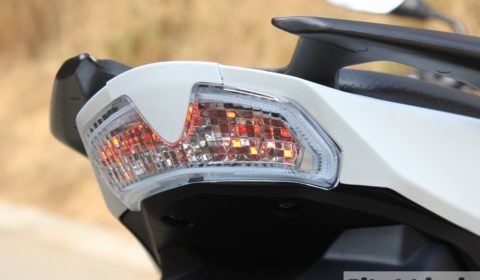
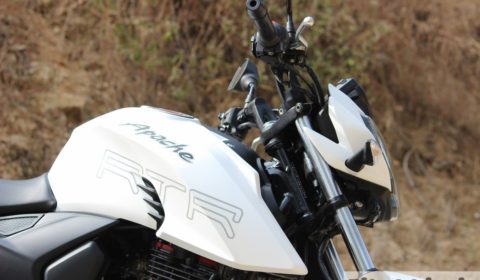
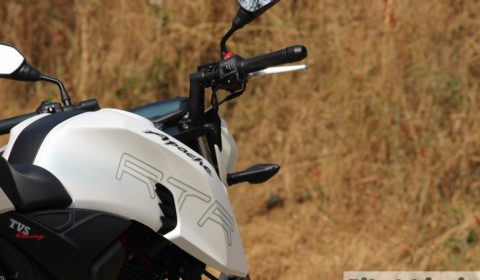
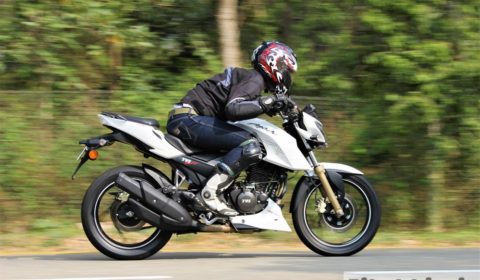
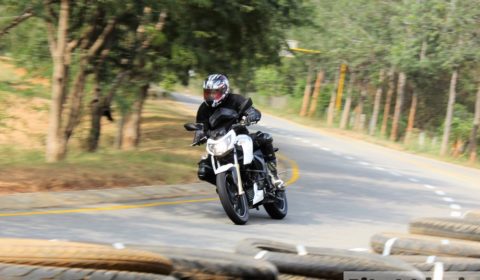
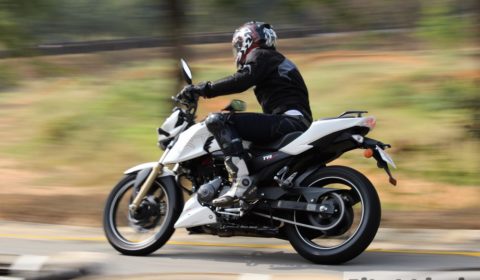

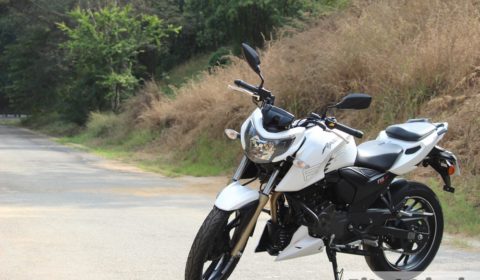
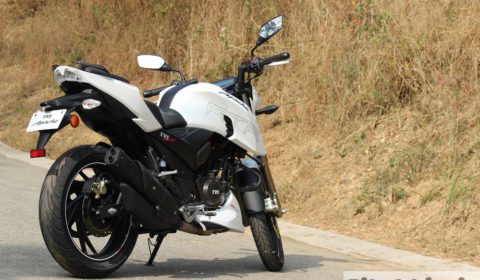
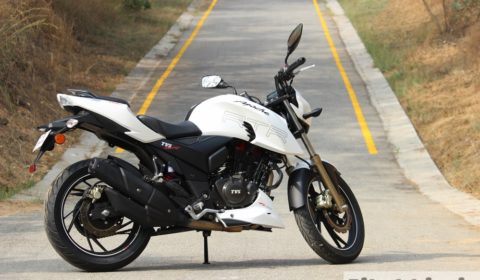
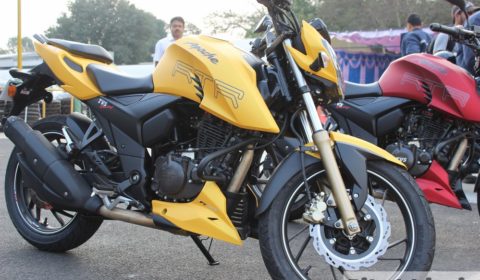
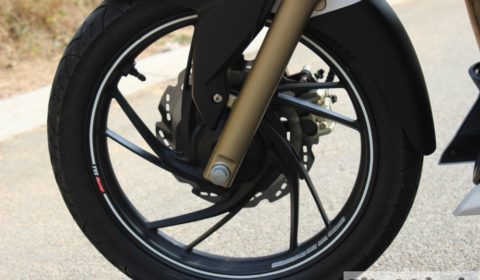

![Royal Enfield Guerrilla 450 Launch This Year [Speculation]](https://bikeadvice.in/wp-content/uploads/2022/12/Royal-Enfield-Hunter-450-pic-headlamp-100x70.jpg)